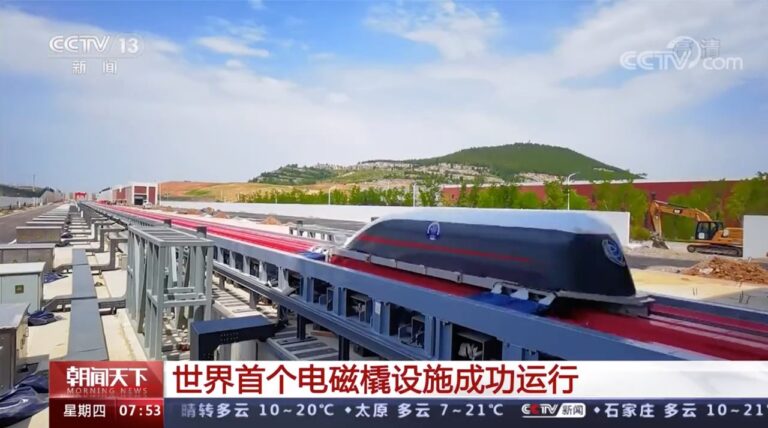A Chinese research facility developing an ultra-fast hyperloop train has completed its first test runs using a full-sized passenger capsule, according to media reports.
China Space News reported on Wednesday that three test runs were completed at a superconducting maglev test line in Datong, Shanxi province. The project aims to eventually carry passengers and cargo at a speed of 1,000km/h (621mph) or faster in a near-vacuum tube and, if successful, would be the world’s fastest ground-based transport technology.
During the test runs on January 14, the capsule reached speeds of up to 50km/h, travelling a distance of 210 metres (689 feet) each time, according to the report.
Defence contractor China Aerospace Science and Industry Corporation (CASIC), which built and operates the facility, said that critical components – including a superconducting magnet, high-power electric systems, AI safety controls, wireless communication devices and sensors – had worked as planned during the tests, paving the way for future experiments at higher speeds.
The report did not specify whether air had been pumped out of the tube during the tests. Maintaining a low-pressure environment in the tube is one of the biggest challenges in developing the technology.
The fastest high-speed trains now in service operate at 350km/h. Raising their speed would significantly increase rail wear and energy consumption because of air resistance.
But the Datong facility’s maglev – or magnetic levitation – technology eliminates the friction that wears down rails, while its vacuum tube reduces air resistance.
SpaceX founder Elon Musk first proposed the idea of a “hyperloop” tube train in 2012 to push land-based transport to extreme speeds. He established The Boring Company to bring the idea from paper to life.
Richard Branson, the founder of the space travel company Virgin Galactic, also joined the race with a similar venture, Hyperloop One, in Los Angeles. The company conducted the world’s first test carrying passengers in pods, reaching a speed of 172km/h in 2020.
But financial trouble and technical challenges have cast a shadow over these projects. Last year, Hyperloop One reportedly laid off more than 100 employees and abandoned the idea of transporting humans.
The Boring Company reportedly dismantled its test tunnel last year to make space for a car park for SpaceX employees.
China was late to the hyperloop game, as CASIC did not break ground on the Datong facility until April of last year.
But it took less than a year for the project team to complete its first test run after the start of construction – a feat China Space News said was achieved through innovation and strong government support.
In October, a test was conducted using a scaled-down prototype pod while the tube was still under construction.
The test facility’s tube currently measures 2km in length and is expected to be extended to 60km over the next few years to achieve a top speed of 1,000km/h, according to the local government.
CASIC has been involved in the development of advanced weapons systems, including rail guns and the DF-17, China’s first hypersonic missile to enter service.
China now operates the world’s largest high-speed rail network with a total length exceeding 42,000km. The government plans to increase the maximum speed of the trains to 400km/h by 2025.
A prototype maglev train and test line with a top speed of 600km/h have been built in the coastal city of Qingdao.
Some military experts believe that new technologies developed at the Datong hyperloop facility, such as electromagnetic propulsion and power management systems, could be used for defence.



